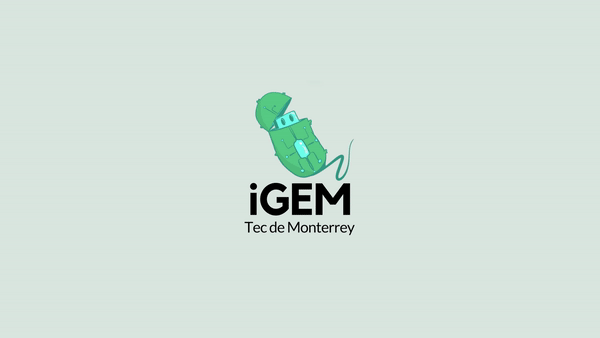EstebanDLPT (Talk | contribs) m |
EstebanDLPT (Talk | contribs) m |
||
| Line 23: | Line 23: | ||
width: 50%; | width: 50%; | ||
height: auto; | height: auto; | ||
| − | |||
float: right; | float: right; | ||
} | } | ||
| Line 38: | Line 37: | ||
} | } | ||
| − | .main-info .gif { | + | .main-info img.gif { |
width: 100%; | width: 100%; | ||
| + | margin: 0; | ||
} | } | ||
</style> | </style> | ||
Revision as of 18:49, 17 October 2018







References
Amlinger, L., Hoekzema, M., Wagner, E. G. H., Koskiniemi, S. & Lundgren, M. Fluorescent CRISPR Adaptation Reporter for rapid quantification of spacer acquisition. (2017).doi: 10.1038/s41598-017-10876-z.
Díez-Villaseñor, C., Guzmán, N. M., Almendros, C., García-Martínez, J. & Mojica, F. J. M. CRISPR-spacer integration reporter plasmids reveal distinct genuine acquisition specificities among CRISPR-Cas I-E variants of Escherichia coli. RNA Biol. (2013). doi:10.4161/rna.24023
Farzadfard, F., & Lu, T. K. Genomically encoded analog memory with precise in vivo DNA writing in living cell populations. Science. (2014). doi: 10.1126/science.1256272.
Levy, A., Goren, M. G., Yosef, I., Auster, O., Manor, M., Amitai, G., Edgar, R., Qimron, U. & Sorek, R. CRISPR adaptation biases explain preference for acquisition of foreign DNA. Nature. (2015). doi:10.1038/nature14302
Nuñez, J. K. Mechanism of CRISPR–Cas Immunological Memory. (2016). Doctoral dissertation, UC Berkeley
Nuñez, J. K., Kranzusch P, Noeske J, Wright A, Davies C, Doudna J. Cas1-Cas2 complex formation mediates spacer acquisition during CRISPR-Cas adaptive immunity. Nat. Struct. Mol. Biol. (2014). doi:10.1038/nsmb.2820
Sheth, R. U., Yim, S. S., Wu, F. L. & Wang, H. H. Multiplex recording of cellular events over time on CRISPR biological tape. Science. (2017). doi:10.1126/science.aao0958
Shipman, S. L., Nivala, J., Macklis, J. D., & Church, G. M. Molecular recordings by directed CRISPR spacer acquisition. Science. (2016). doi: 10.1126/science.aaf1175
Tang, W., & Liu, D. R. Rewritable multi-event analog recording in bacterial and mammalian cells. Science. (2018). doi: 10.1126/science.aap8992


